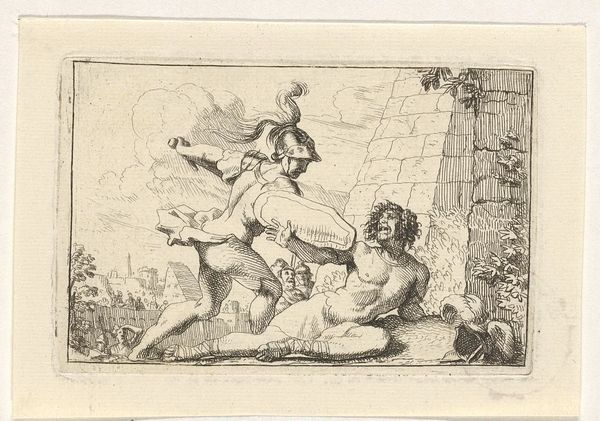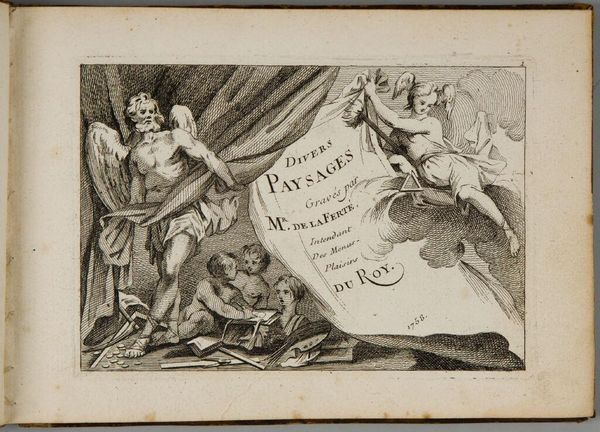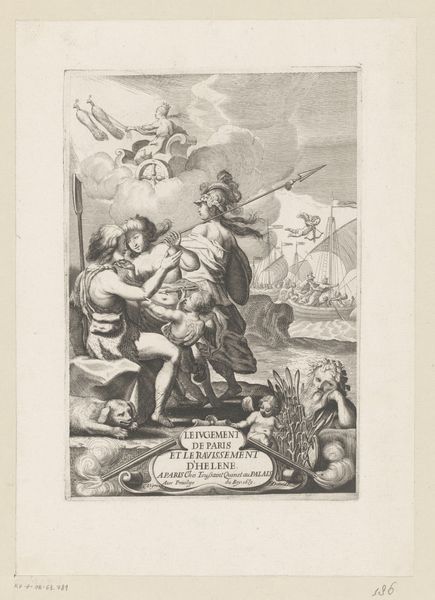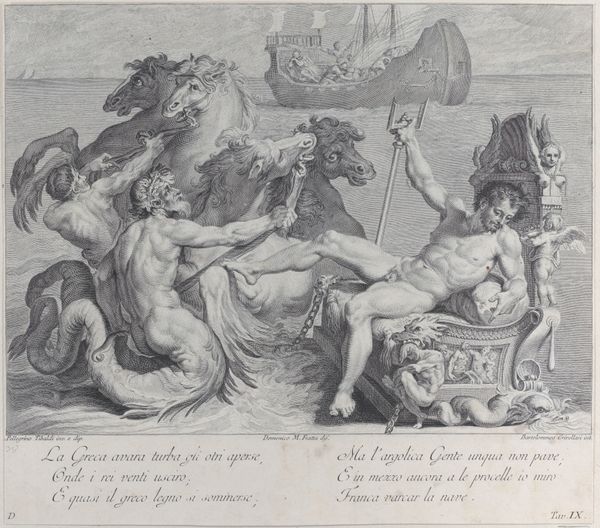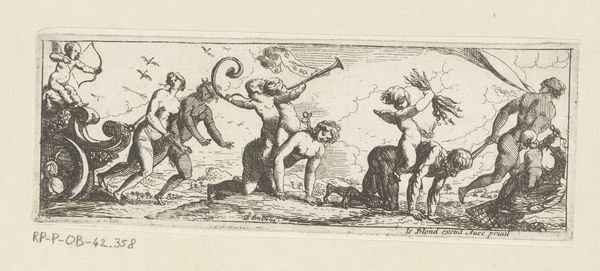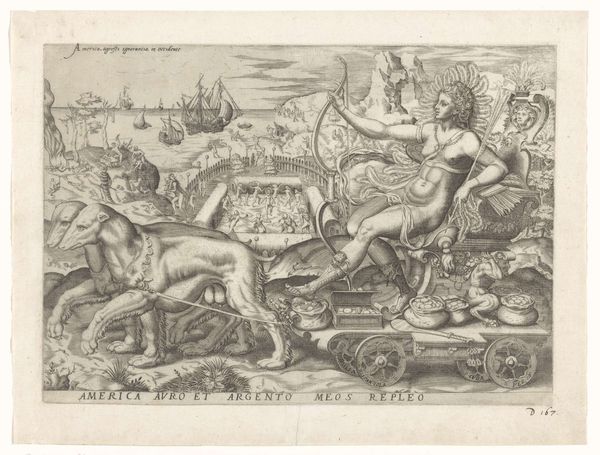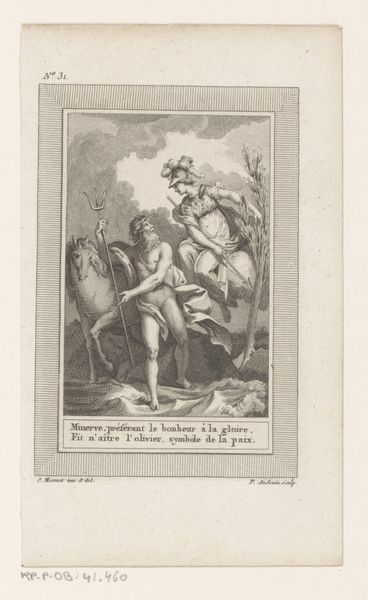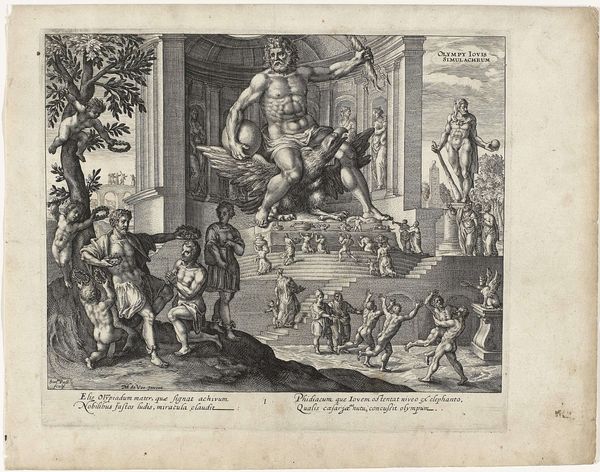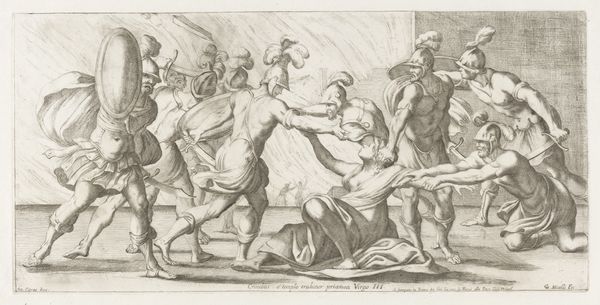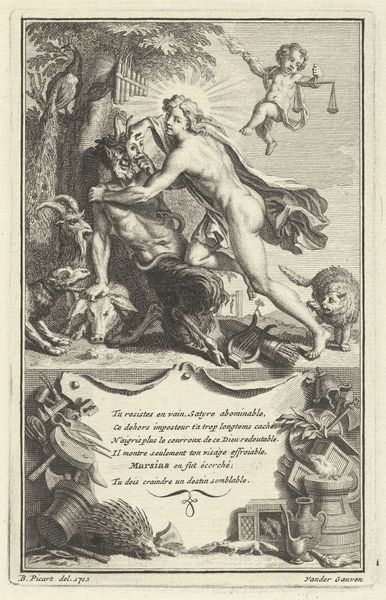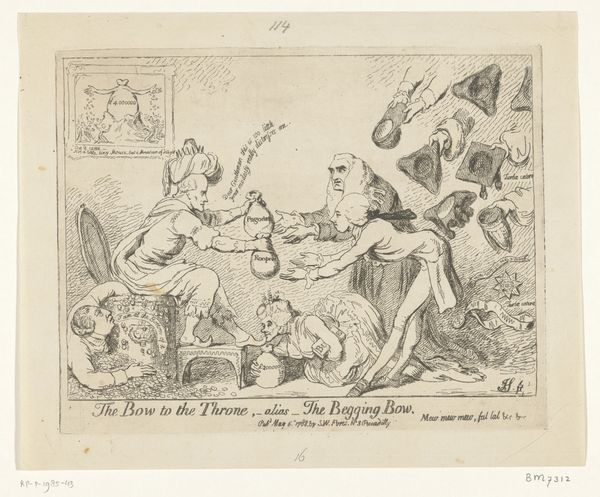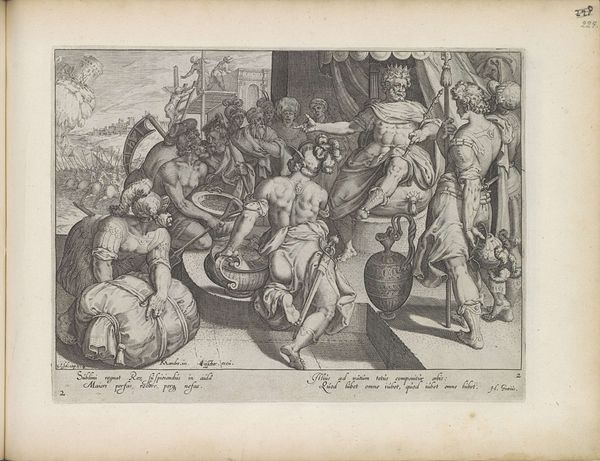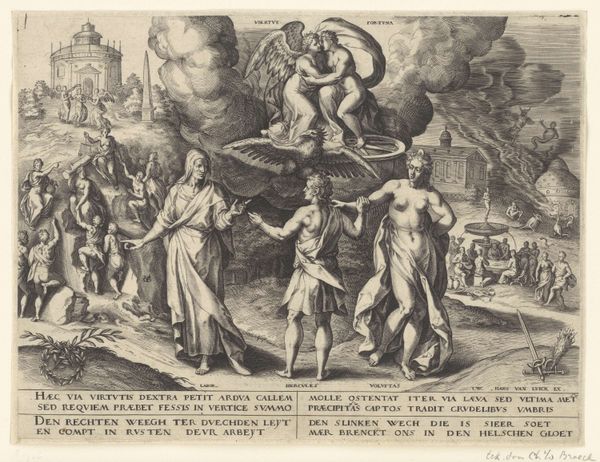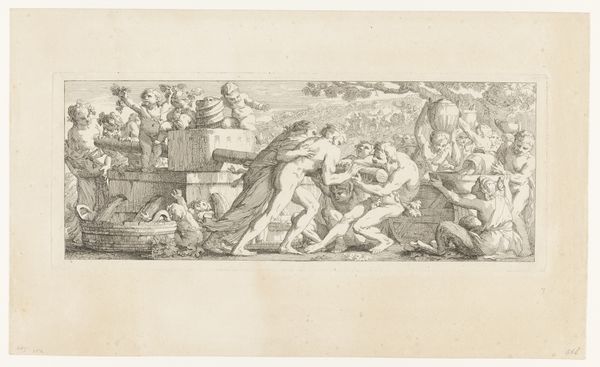
engraving
#
baroque
#
pen drawing
#
figuration
#
history-painting
#
engraving
Dimensions: height 76 mm, width 339 mm
Copyright: Rijks Museum: Open Domain
Curator: The work before us is “The Triumph of Painting” by Pierre Brebiette, made between 1608 and 1650. It's currently held at the Rijksmuseum. The piece is rendered as an engraving, showcasing a procession honoring the art of painting. My initial thought is of movement—a parade celebrating creativity. Editor: There's a classical, almost theatrical quality to it, isn't there? All the figures—the allegorical representations, the cherubs—they contribute to a sense of elevated importance. But looking closer, I can't help but notice the overt Eurocentricity of the figures and forms represented. Who gets to define the “triumph” of painting, and whose stories are we actually seeing celebrated here? Curator: A very valid point. The work reflects the dominant European ideals of the time. The allegory of Painting is front and center. The procession is meant to symbolize painting's ability to imitate nature and to elevate culture. We must consider that it exists in a specific socio-political moment, reflecting specific notions of beauty and skill. Editor: And those notions were intrinsically linked to power structures, right? Who had access to artistic training, patronage, and ultimately, the means of representation? I'm thinking of how Brebiette and his contemporaries often exoticized non-European subjects, portraying them through a biased lens of colonial power. How does this inform what appears to be a celebration of pure artistic talent? Curator: Absolutely, these engravings played a crucial role in disseminating these ideas. And indeed, considering his place and time, Brebiette was unlikely to question the prevailing ideologies. Editor: Ultimately, reflecting on how artwork acts as a kind of portal. Understanding art's triumph isn't just about artistic skill, but examining it within its social and power context too. Curator: I think the lasting power in "The Triumph of Painting" lies not only in the artist’s technique but also its ability to invite questions that continue to evolve.
Comments
No comments
Be the first to comment and join the conversation on the ultimate creative platform.
